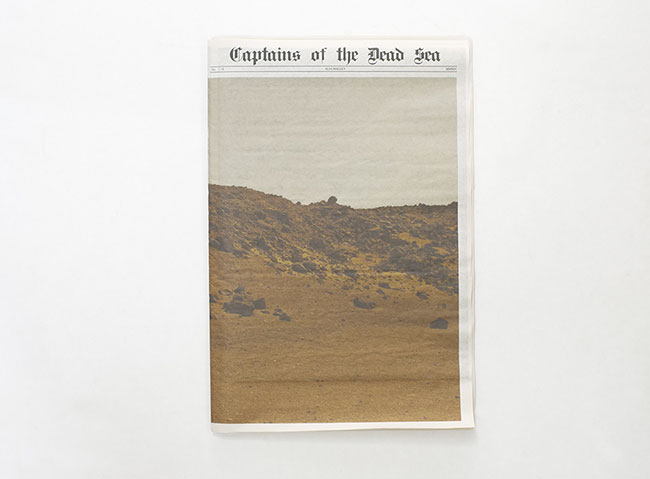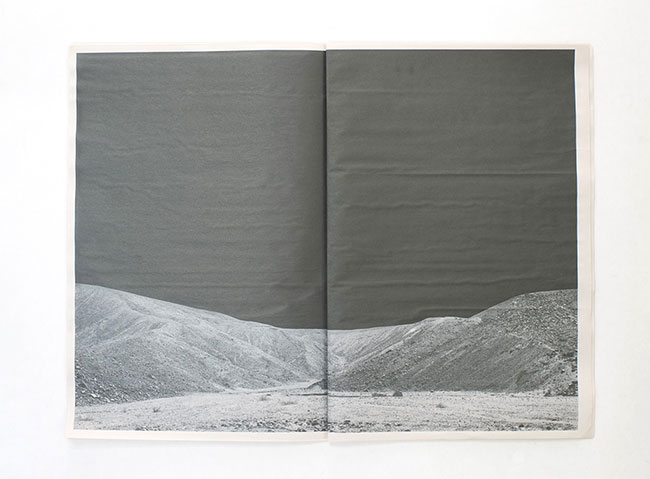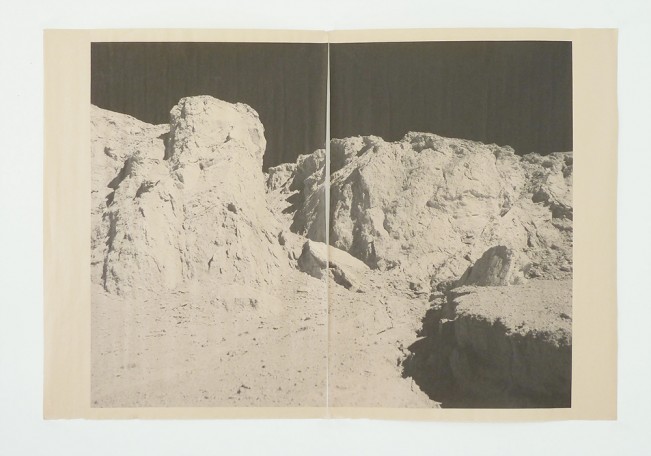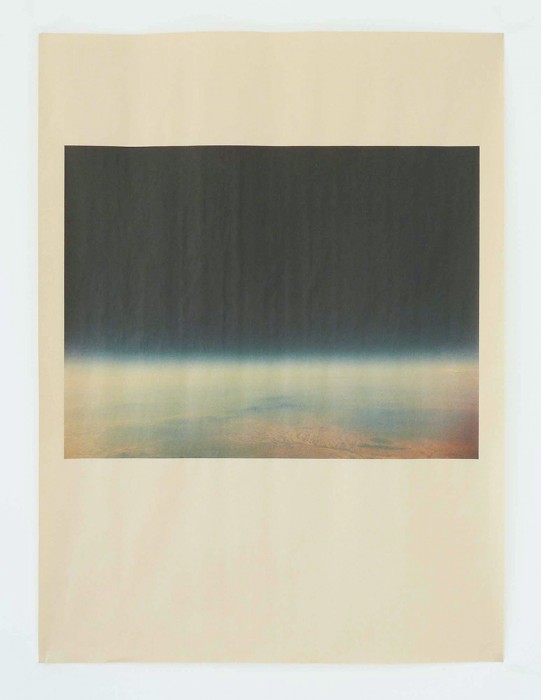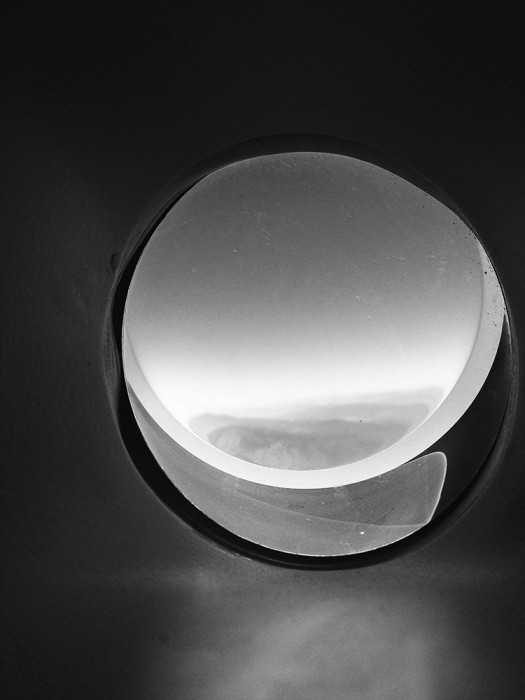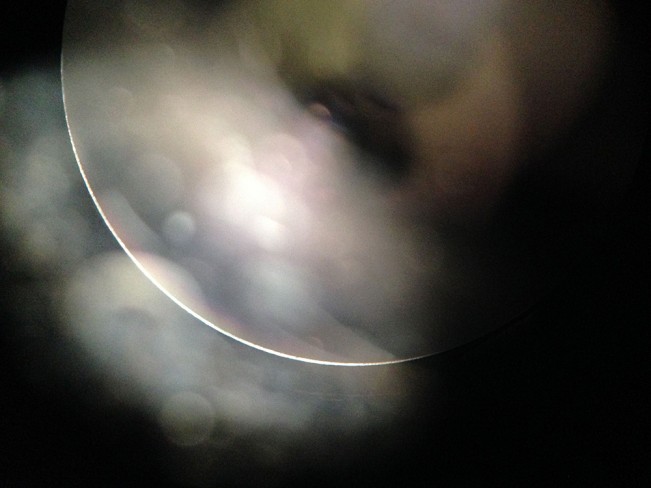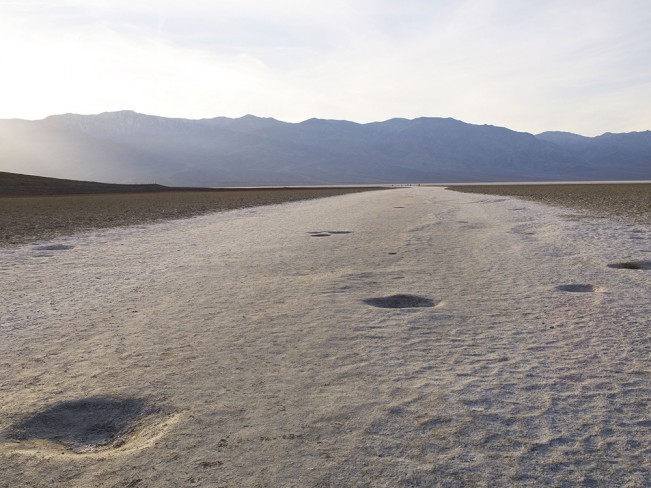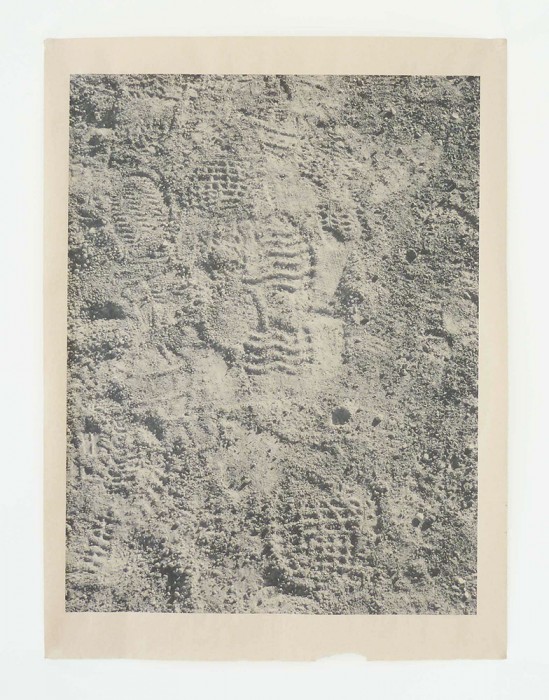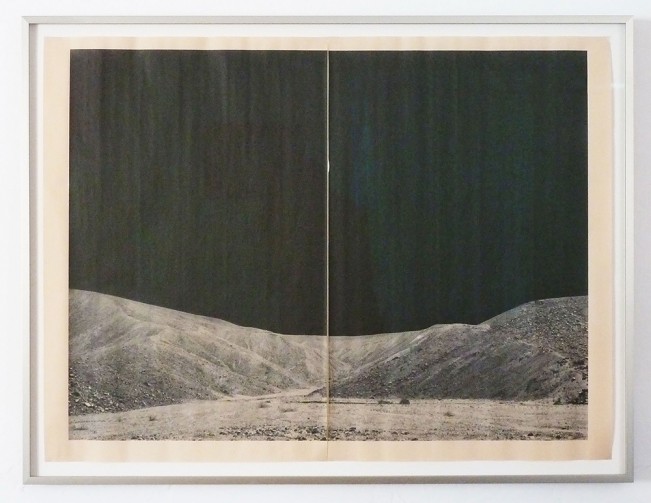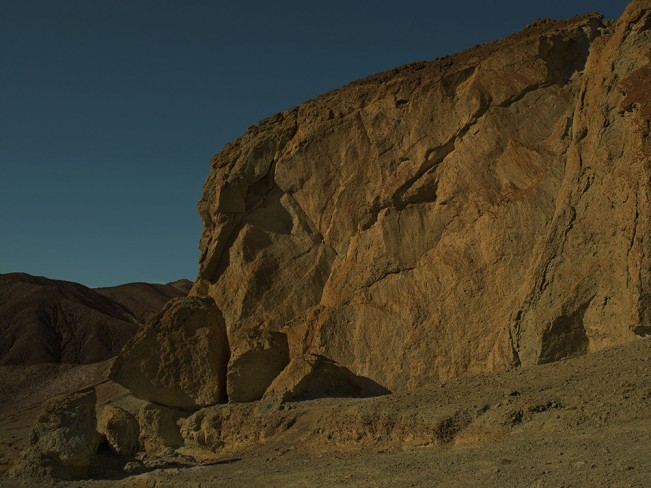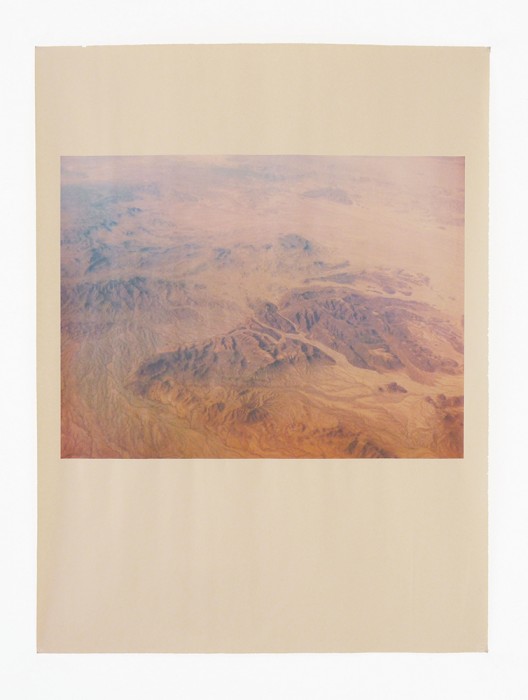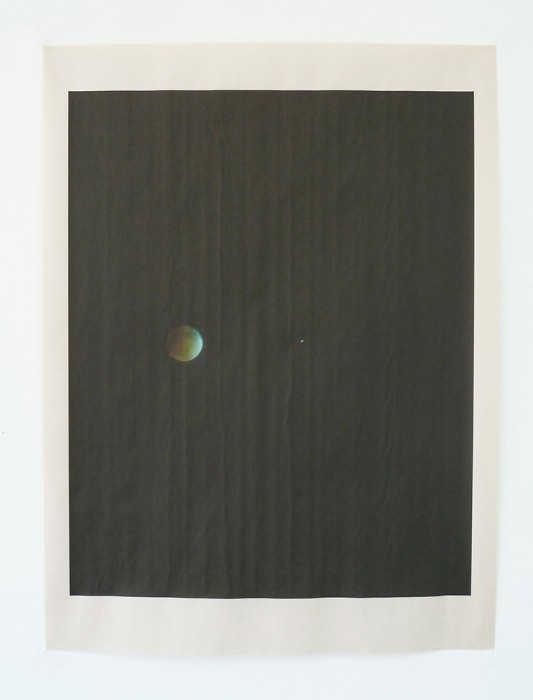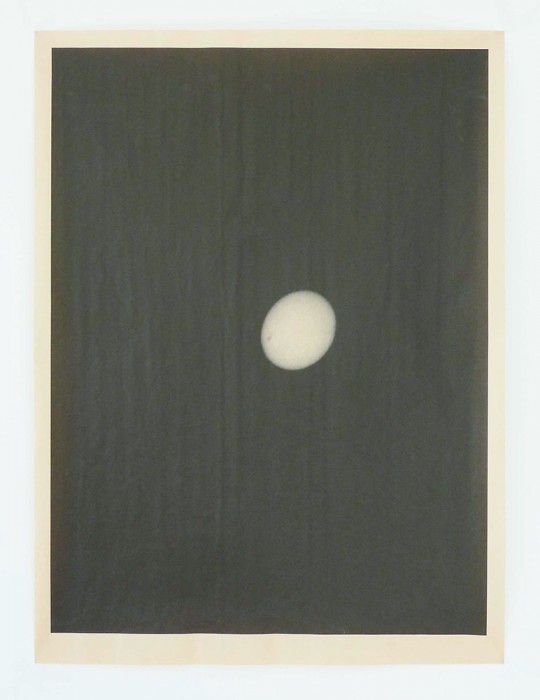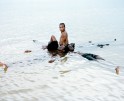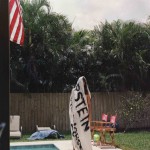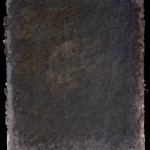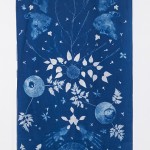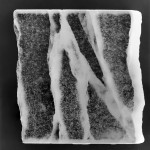Alia Malley: Captains of the Dead Sea
“At this point in history, our common experience is mediated by the way in which the material world has been previously filmed or photographed. I go to Death Valley and realize that it ‘looks like’ Mars… or the Moon…or a scene from Star Wars.”
Alia Malley has had a long photographic interest in exploring California landscape with unique considerations. Her previous projects, Southland and A Cavalier in Sight of a Village, examined the terrain of Southern California and reconsidered landscape through historical narratives and artistic references. At the heart of her work, Alia is a storyteller, creating work that feels cinematic and feels at once familiar and yet, unseen. Her new project, Captains of the Dead Sea, an exhibition of photo-based works on paper, just opened at Sloan Projects at Bergamot Station in Santa Monica, CA. Alia also has an Artist’s Book of this project: 12 x 18 inches, 36 pages, pigment prints on 30 lb newsprint, tabloid newspaper binding, 2014. Edition of 10. For inquiries and availability, please email info@aliamalley.com
Captains of The Dead Sea “explores the continuity between fact and fiction, history, and hoax. A convincing journey through deep space and across the stark terrain of distant planets, the images that comprise Captains read like media artifacts from an authentic space chronicle yet were primarily shot on location in desert settings of California and the Southwestern United States”.
By training her lens on topographical features in the landscape such as rock and crater formations that recall media images of the pockmarked surface of the moon or the rust colored valleys of Mars, Malley demonstrates how photographic images have been imprinted in our consciousness and have comprehensively altered the way we perceive and interpret the landscape around us.
Alia Malley received her BA in Critical Studies from USC School of Cinematic Arts in 1994, and her MFA in Visual Arts from the University of California Riverside in 2010. She was the recipient of the 2011 CENTER Dealer’s Choice Award, and the 2010 Merck Award at Darmstädter Tage Der Fotografie, Germany. In 2011, she was selected for the Fundación Botín – Taller de Paul Graham in Santander, Spain, and in 2013 participated in the Farm Foundation’s Arctic Circle residency in Spitsbergen, Svalbard. She was selected for the 2015 Field-Notes Hybrid_Matters residency at theKilpisjärvi Biological Station in Lapland, Finland.Her work has been exhibited in solo and group exhibitions throughout the US, including the Indianapolis Museum ofContemporary Art, and the Riverside Art Museum, California. Malley’s work is included in the permanent collection of the Los Angeles County Museum of Art and the UCLA Library Special Collections.
Captains of the Dead Sea
I. A sweeping generalization: I am deeply interested in the way images operate.
II. Things I have been thinking about: the golden era of NASA’s Apollo program, the saved newspaper as artifact, John Ford’s use of day-for-night in classic westerns like The Searchers (1956), 19th Century Survey photography of the American West, and the 1977 Mars landing hoax conspiracy film (and OJ Simpson vehicle) Capricorn One.
III. Living and working in the shadow of Hollywood has made me acutely aware of the cinematic use of landscape as “location.” In filmmaking, the idea of place is fluid— one place often acts as a facsimile for another. In David Lean’s epic Lawrence of Arabia (1962), for example, Spain posed as both Cairo and Jerusalem, while the famous Aqaba scene was built out of a nearby dry riverbed. In Robert Altman’s classic MASH (1970), a state park in Malibu, California, USA portrayed 1950’s Korea.
IV. At this point in history, our common experience is mediated by the way in which the material world has been previously filmed or photographed. I go to Death Valley and realize that it “looks like” Mars… or the Moon…or a scene from Star Wars. Captains of the Dead Sea investigates this role of filmed landscape in terms of story and place (or conversely, placelessness), and the continuum between documentary and fictional narrative.
V. Newsprint features prominently in the project, as newspapers (along with television) were a major media through which we first experienced images from space. Front pages were routinely saved as artifacts, as proof that “this happened on this day.” The inadequacies of these artifacts– fading or yellowing over time, with imperfections inherent to the industrial printing process and systems of mass physical distribution— is compelling, especially in a contemporary context in which imagery is everywhere but ephemeral, disposable, and proves nothing. -Alia Malley
Shot on various formats, Malley prints her work predominantly onto newsprint, paying homage to the newspapers through which we first experienced images from space and reminding us of those front pages, routinely and nostalgically saved not only as souvenirs but as the very “proof” of our collective history. At times, her prints are presented as two halves of a newspaper spread, unfolded and ceremoniously displayed as one image, as if some unknown reader was inclined to preserve what might otherwise get replaced by the next day’s offerings.
Posts on Lenscratch may not be reproduced without the permission of the Lenscratch staff and the photographer.
Recommended
-
Arnold Newman Prize: C. Rose Smith: Scenes of Self: Redressing PatriarchyNovember 24th, 2025
-
The Aline Smithson Next Generation Award: Emilene OrozcoNovember 21st, 2025
-
MATERNAL LEGACIES: OUR MOTHERS OURSELVES EXHIBITIONNovember 20th, 2025
-
Josh Aronson: Florida BoysNovember 1st, 2025
-
Robert Rauschenberg at Gemini G.E.LOctober 18th, 2025


